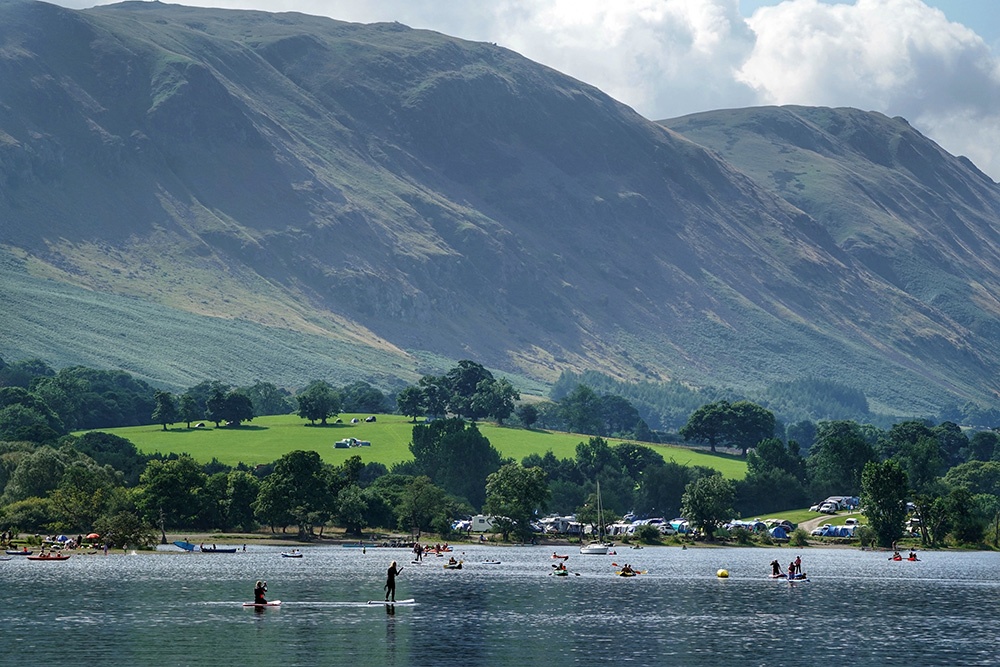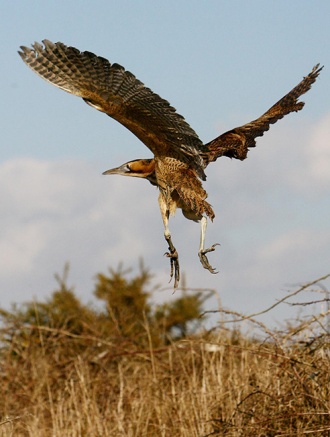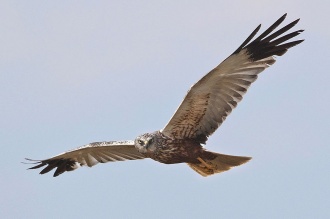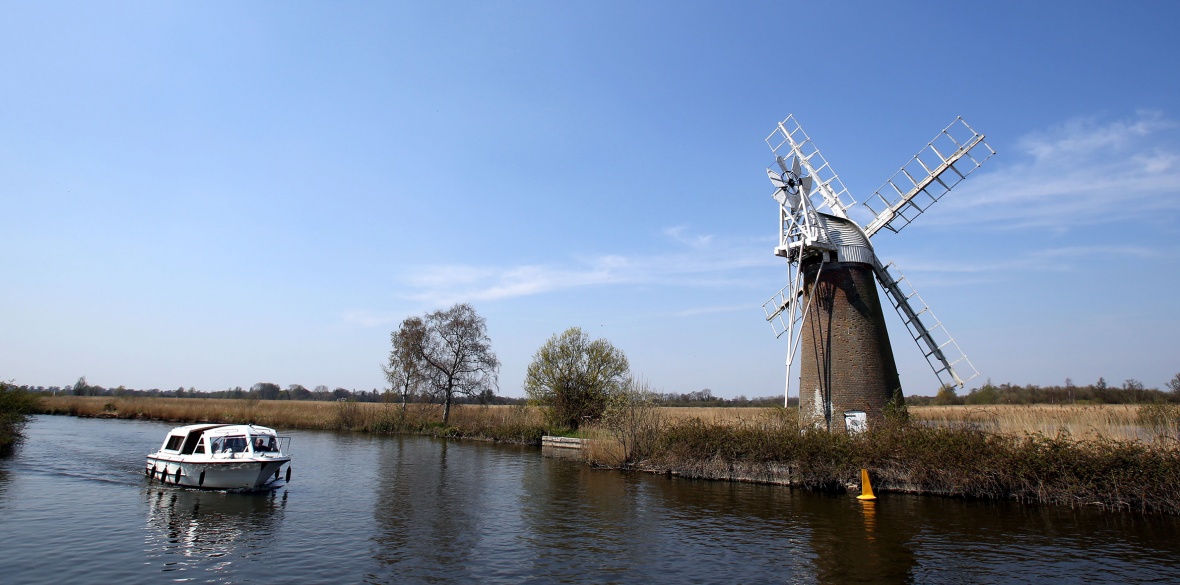This is the last article you can read this month
You can read more article this month
You can read more articles this month
Sorry your limit is up for this month
Reset on:
Please help support the Morning Star by subscribing here
IF YOU are looking for a day out or a weekend away then your first choice should be one of the gems of our green and pleasant land, our chain of national parks.
There are 15 national parks in the UK. Find the one nearest you or venture further for some of the best outdoor countryside. Remember these belong to you.
England has 10 national parks. My own favourite, The Broads, then Dartmoor, Exmoor, the Lake District, the New Forest, Northumberland, the North York Moors, the Peak District, the South Downs and the Yorkshire Dales.

Scotland has two national parks — one covers the Cairngorms and Loch Lomond. The other the Trossachs.
All offer huge areas of beautiful and often spectacular countryside with easy access to visitors
If, like me, you are disabled and do you exploring on a mobility scooter, national parks have 1,386 miles of routes designated as suitable for people with access challenges.
However a recent study has made me and a good few people more influential than me look at exactly where we should be going with large protected landscapes like our national parks.
This the largest-ever study of protected areas — places “set aside” ostensibly for nature — has revealed that most do not actively benefit wildlife.
In the study, published by Nature magazine, scientists examined the impact of 1,500 protected areas in 68 countries, focusing their analysis mostly on wetlands and waterbirds.
They found that, in terms of how wildlife fared, success varied hugely around the world and depended a great deal on how an area was managed.
Authors of the study say that habitats need to be managed effectively in ways that provide a boost for nature.
“There need to be rules in place and restoration,” said lead researcher Dr Hannah Wauchope, from the Centre for Ecology and Conservation at University of Exeter.
“We can’t just draw a line around an area and say: ‘You can’t build a car park here’.”
Dr Wauchope explained that the study used population trends of wetland birds as a measure of the success of a protected area, which can be anything from an area of outstanding natural beauty to a carefully managed nature reserve.
She and her colleagues also compared sites before and after they were officially protected, and compared the trends of similar bird populations inside and outside protected areas.
“In the majority of places we looked, wildlife populations were still stable or were increasing, but they weren’t doing any better than in unprotected areas,” she told BBC News.
“That’s disappointing, but not surprising. There seems to be this disconnect between people talking about how much land is protected and whether those areas are actually doing anything positive.”
According to the UN, one million species of plants and animals are now under threat. Last month world leaders gathered in China to set the agenda of global conservation efforts for the next decade.
Many countries are now aligning themselves with a target of protecting 30 per cent of the Earth’s surface by 2030.
Even this, say the scientists, will not guarantee the preservation of biodiversity. They say that targets need to be set for the quality of protected areas, not just the quantity.
Measuring success could include doing species population counts or setting goals for increasing the diversity of plant and animal species in an area.

Wetland restoration in Britain is credited with a boost in the population in bitterns. The bittern is a thickset heron with all-over bright, pale, buffy-brown plumage covered with dark streaks and bars. It flies on broad, rounded, bowed wings.
This secretive bird is very difficult to see, as it moves silently through reeds at water’s edge, looking for fish. The males make a remarkable far-carrying, booming sound in spring.
It was always much easier to hear a bittern boom than to actually spot the rare and threatened bird.
The bittern’s very small, reedbed-dependent population make it an Amber List species. it is also a schedule one species.
The study’s co-author, Prof Julia Jones, from Bangor University, stressed that “drawing lines on a map does nothing for nature.”
She told us: “An obsession with reaching a certain area-based target — such as 30 per cent by 2030 — without a focus on improving the condition of existing protected areas will achieve little. I really hope to see a focus on effectiveness of protected areas, rather than simply how much surface area is devoted to them.”
I saw my first bittern when boating on the Broads. The Broads National Park is one of those “protected areas” focused on in the UN study.
The bittern is just one of the rare species to be found in this watery, peaceful and lovely place. Other bird species include the white stork, the crane and even the white-tailed sea eagle. Other bird species found here in numbers include teal and wigeon and reed and sedge warblers.

The marsh harrier, one of our rarest birds of prey, has made a comeback in the Broads National Parks too. This is the largest of the harriers, big enough to be confused with a buzzard. It can be recognised by its long tail and light flight with wings held in a shallow V shape.
It is distinguishable from other harriers by its larger size, heavier build, broader wings and absence of white on the rump. Females are larger than males and have obvious creamy heads.
Its future in Britain is now more secure than at any time during the last century, but historical declines and subsequent recovery means it is an Amber List species. Marsh harriers are a schedule one listed bird in the Wildlife and Countryside Act.
The Broads has long been renowned for its biodiversity. It is home to more than a quarter of the rarest wildlife in the UK. When it comes to plants and land animals, the impressive growth in native species returning to the Broads is just as impressive.
Nationwide we really should work to see a focus on effectiveness of protected areas, rather than simply how much surface area is devoted to them.
Yet now the Tories are talking about allowing more development in the Green Belts and even more disgustingly in our national parks.
Anything can go, or be built on, in the endless search for more profits for the builders, developers and mineral extraction companies who fund PM Boris Johnson and his Tory Party.
Our national parks are still not safe from fracking and we simply cannot trust our lying PM Johnson and his greedy crew with safeguarding our countryside.
World leaders too really need to set meaningful targets for the next decade — but will they? That can only depend on pressure from ordinary people fighting for the rare and threatened species with which we share our planet.
In Britain too we will have to fight hard to protect our national parks and other protected landscapes from those who see them simply as another source of the god of profit.
In the meantime, and while they still belong to us, get out there and visit. It isn’t hard. In fact you could say it is actually just a walk in the park.











